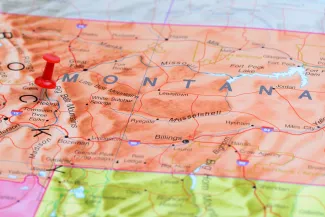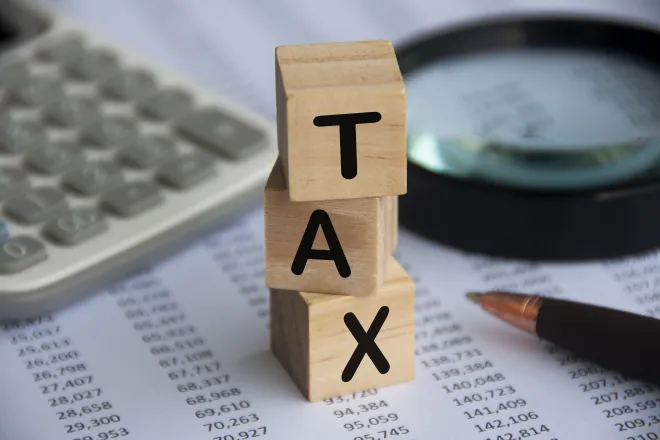
Audit finds Montana is missing $300 million a year in taxable new construction value
The Montana Department of Revenue is missing an estimated $300 million a year in new construction value as staff falls behind on property inspections, costing local municipalities and the state tax revenue, reducing budgets and creating inequities in property tax payments, according to a legislative audit released Thursday.
Auditors made five recommendations – one for the Legislature and four for the Department of Revenue – to try to cut down that gap. They include requiring local permitting agencies to send copies to the department, having a better process for statewide permitting, using aerial imagery to better inspect hard-to-reach properties, trying to inspect more properties that haven’t been inspected in six or more years, and having the department build a plan to retain more staff.

© iStock - Ligorko
Department of Revenue Director Brendan Beatty conditionally or partially concurred with all four recommendations for the department, saying he largely agreed with them, but that many would be contingent on receiving funding from the legislature that has so far not materialized.
Auditors will present the report to the department and legislators at a Legislative Audit Committee meeting this month, at which lawmakers will respond to the recommendation that it create new permitting reporting requirements to streamline that process.
The report says the department depends heavily on gathering or receiving local permits to determine where properties have been renovated or received additions, which boosts a property’s value but should also mean a higher tax bill for its owner and slight reductions for others in the jurisdiction who did not make improvements during the past year. The department also depends on its appraisers to find new construction every year in their regions.
The report says that due in part to staffing levels, reappraisal reviews and inspections are lower on the priority list of department field staff, and more than one-third of the properties across Montana have not been inspected in more than six years. It says 15 percent of Montana properties haven’t been inspected in at least a decade.
The department is supposed to appraise all properties at 100 percent of their market value as of Jan. 1 of each year, which should capture any new construction done during the prior year. The report says the department typically identifies $1.5 billion a year in new construction through its existing process and another roughly $300 million a year in new residential construction through sales verifications. Auditors still found the department was still missing about $300 million a year for various reasons.
“We estimate the department captures 72 percent of residential new construction through permits, captures 14 percent through sales verifications, and misses about 14 percent each year,” the report said.

While there was around $1.2 billion in new residential construction estimated to have been missed during the 2018-2023 timeframe at which auditors looked, the report noted that was only about 1 percent of total residential value (about $114 billion) in 2023 and about $16.2 million in taxable value, the audit said.
But cities and counties have an array of permits they require people to obtain before undertaking new construction, according to the audit. Rural areas generally require fewer permits than urban areas, and most permits, no matter the jurisdiction, are not stored centrally. While department staff tries to gather as many permits each month, sometimes that requires picking up paper copies in some counties, while others send them electronically.
Further, state law does not require local jurisdictions to provide permits to the department, according to the audit, and some choose not to, saying that it’s the department’s job to identify new construction.
But not being able to account for the full scope of new construction, even if it’s a relatively small amount compared to the total residential value, can be costly for local municipalities and school districts.
“Using conservative values for these parameters, we then estimate that this unidentified residential new construction accounts of about $8.25 million in potential tax revenue, including $100,000 in annual revenue to state universities and $1.5 million in annual funding for education equalization,” the audit report says. “In addition, this residential new construction represents a maximum of $6 million in ongoing tax inequity for property owners.”
Jurisdictions set annual budgets without including newly taxable value, but then receive that extra revenue after the number of mills levied are applied to the newly taxable value, meaning missed taxable value on new construction could cost those jurisdictions and leave them unable to keep up with rising costs, the report says.
While the Department of Revenue can levy large taxes for property owners who conceal or misrepresent their property to avoid extra taxes, property owners aren’t responsible for telling the department when they have made improvements. The report says that can disincentivize property owners from reporting new construction, which would increase their tax bill, while it has the opposite effect for people whose property value is declining.

Moreover, the report says, new construction has been increasing. In 2018, there was less than $1 billion identified in residential new construction value, while that figure grew to more than $2.4 billion in 2023.
In addition to asking the Legislature to require permits be sent to the Department of Revenue, the audit report recommends the department work with the Department of Labor and Industry to come up with a better process to find which permit information would be most useful in identifying new construction.
The report also recommends investing in aerial imagery being used in other states and by the federal government that could be a substitute for on-site inspections, which have proven most difficult in the vast rural lands of Montana.
It recommends working to cut down on the number of properties that have not been inspected in the past six or more years by working to map them and bolster the department’s staff, which was cut by the Legislature in 2017 and 2019 and has seen turnover in the years since. The audit found the department only reached about 21 percent of the properties needed to ensure every property was being inspected within that timeframe.
Beatty said in a response to the audit that he believes the recommendations will be possible to address if lawmakers can better fund the department’s hopes for more staff and for the imagery capabilities, but the audit report said the governor’s office had declined to include some of those requests in its budget for the upcoming biennium. But Beatty said conditionally, the department could accomplish what is outlined.
“The department believes the portions of these recommendations within our control can be accomplished within one year,” Beatty wrote.
Daily Montanan is part of States Newsroom, a nonprofit news network supported by grants and a coalition of donors as a 501c(3) public charity. Daily Montanan maintains editorial independence. Contact Editor Darrell Ehrlick for questions: info@dailymontanan.com. Follow Daily Montanan on Facebook and X.
















